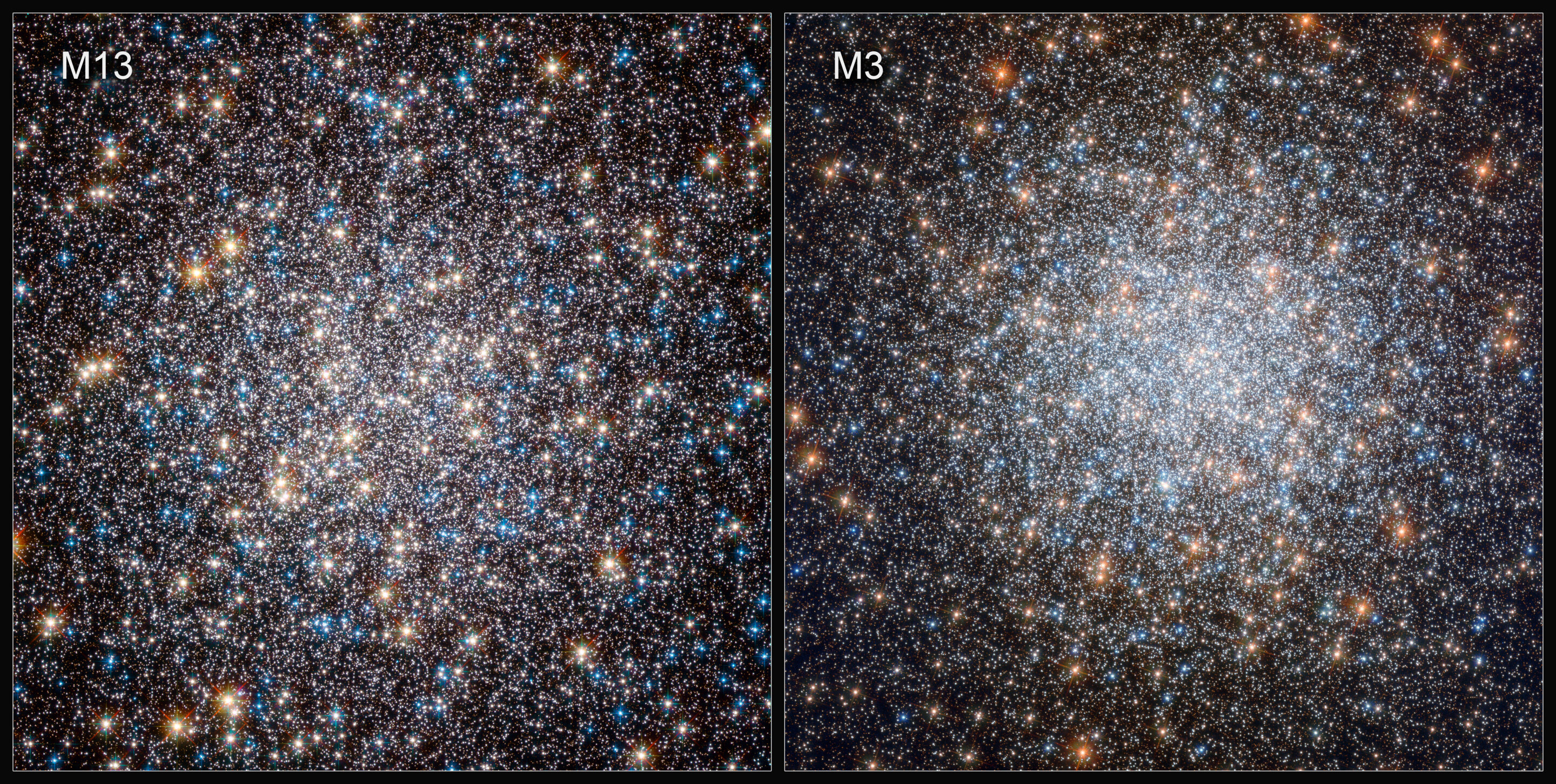
[ad_1]

To study the physics behind the evolution of white dwarfs, astronomers compared cooling white dwarfs in two massive collections of stars: globular clusters M3 and M13. These two clusters share many physical properties such as age and metallicity, but the populations of stars that will eventually give rise to white dwarfs are different. This makes M3 and M13 together a perfect natural laboratory for testing how different populations of white dwarfs cool down. Credit: ESA / Hubble & NASA, G. Piotto et al.
The widespread view of white dwarfs as inert slowly cooling stars has been challenged by observations from the NASA / ESA Hubble Space Telescope. An international group of astronomers have discovered the first evidence that white dwarfs can slow their rate of aging by burning hydrogen on their surface.
“We have found the first observational evidence that white dwarfs can still undergo stable thermonuclear activity,” explained Jianxing Chen of the Alma Mater Studiorum Università di Bologna and the Italian National Institute of Astrophysics, who led this research. . “It was quite surprising, because it goes against what is commonly believed.”
White dwarfs are the slowly cooling stars that shed their outer layers during the later stages of their life. They are common objects in the cosmos; about 98% of all stars in the Universe will eventually become white dwarfs, including our own Sun. Studying these cooling stages helps astronomers understand not only white dwarfs, but their early stages as well.
To study the physics behind the evolution of white dwarfs, astronomers compared cooling white dwarfs in two massive collections of stars: globular clusters M3 and M13. These two clusters share many physical properties such as age and metallicity, but the populations of stars that will eventually give rise to white dwarfs are different. In particular, the overall color of stars at an evolutionary stage known as the horizontal branch is bluer in M13, indicating a population of warmer stars. This makes M3 and M13 together a perfect natural laboratory for testing how different populations of white dwarfs cool down.
“The superb quality of our Hubble observations provided us with a comprehensive view of the stellar populations of the two globular clusters,” Chen continued. “It allowed us to really contrast the way the stars evolve in M3 and M13.”
Using Hubble’s Wide-Field Camera 3, the team observed M3 and M13 at near-ultraviolet wavelengths, allowing them to compare more than 700 white dwarfs in the two clusters. . They found that M3 contains standard white dwarfs that simply cool stellar cores. M13, on the other hand, contains two populations of white dwarfs: the standard white dwarfs and those that have managed to retain an outer shell of hydrogen, allowing them to burn longer and therefore cool more slowly.
By comparing their results with computer simulations of stellar evolution in M13, the researchers were able to show that about 70% of white dwarfs in M13 burn hydrogen on their surface, slowing their cooling rate.
This discovery could have consequences for the way astronomers measure the age of stars in the Milky Way. The evolution of white dwarfs has already been modeled as a predictable cooling process. This relatively simple relationship between age and temperature has led astronomers to use the cooling rate of white dwarfs as a natural clock to determine the age of star clusters, especially globular and open clusters. However, white dwarfs burning hydrogen could make these age estimates inaccurate for up to 1 billion years.
“Our discovery challenges the definition of white dwarfs as we envision a new perspective on how stars age,” added Francesco Ferraro of the Alma Mater Studiorum Università di Bologna and the Italian National Institute of Astrophysics , who coordinated the study. “We are now studying other clusters similar to M13 to further constrain the conditions that cause stars to maintain the thin envelope of hydrogen that allows them to age slowly.”
The study is published in Nature astronomy.
Planetary remains around white dwarf stars
Slowly cooling white dwarfs in M13 from the combustion of stable hydrogen, Nature astronomy, DOI: 10.1038 / s41550-021-01445-6, www.nature.com/articles/s41550-021-01445-6
Provided by ESA / Hubble Information Center
Quote: Hubble Discovers Hydrogen Burning White Dwarfs Benefiting from Slow Aging (2021, September 6) retrieved September 6, 2021 from https://phys.org/news/2021-09-hubble-hydrogen-burning-white -dwarfs-aging.html
This document is subject to copyright. Other than fair use for private study or research purposes, no part may be reproduced without written permission. The content is provided for information only.
[ad_2]
Source link